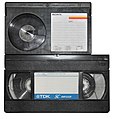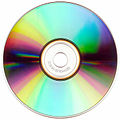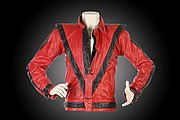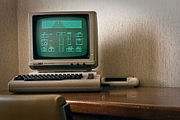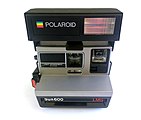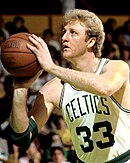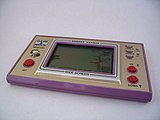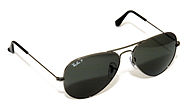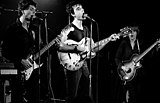1980s

| Millennium |
|---|
| 2nd millennium |
| Centuries |
| Decades |
| Years |
|
| Categories |
The 1980s (pronounced "nineteen-eighties", shortened to "the '80s" or "the Eighties") was a decade that began January 1, 1980, and ended December 31, 1989.
The decade saw a dominance of
The United Kingdom and the United States moved closer to supply-side economic policies, beginning a trend towards global instability of international trade that would pick up more steam in the following decade as the fall of the USSR made right-wing economic policy more powerful.
The final decade of the Cold War opened with the US-Soviet confrontation continuing largely without any interruption. Superpower tensions escalated rapidly as President Reagan scrapped the policy of détente and adopted a new, much more aggressive stance on the Soviet Union. The world came perilously close to nuclear war for the first time since the Cuban Missile Crisis in 1962, but the second half of the decade saw a dramatic easing of superpower tensions and ultimately the total collapse of Soviet communism.
Developing countries across the world faced economic and social difficulties as they suffered from multiple debt crises in the 1980s, requiring many of these countries to apply for financial assistance from the
Major civil discontent and violence occurred, including the
By 1986, nationalism was making a comeback in the Eastern Bloc, and the desire for democracy in
1989 brought the
The 1980s was an era of tremendous population growth around the world, surpassing the 1970s and 1990s, and arguably being the largest in human history. During the 1980s, the world population grew from 4.4 to 5.3 billion people. There were approximately 1.33 billion births and 480 million deaths. Population growth was particularly rapid in a number of African, Middle Eastern, and South Asian countries during this decade, with rates of natural increase close to or exceeding 4% annually. The 1980s saw the advent of the ongoing practice of sex-selective abortion in China and India as ultrasound technology permitted parents to selectively abort baby girls.[3]
The 1980s saw great advances in genetic and digital technology. After years of animal experimentation since 1985, the first genetic modification of 10 adult human beings took place in May 1989, a
The global
The
Politics and wars

Wars
The most prominent
International wars
The most notable wars of the decade include:
- The Cold War (1947–1991)
- Soviet–Afghan War (1979–1989) – a war fought between the Soviet Union and the Islamist Mujahideen Resistance in Afghanistan. The mujahideen found other support from a variety of sources including the Central Intelligence Agency of the United States (see Operation Cyclone), as well as Saudi Arabia, Pakistan and other Muslim nations through the context of the Cold War and the regional India–Pakistan conflict.
- military coup which ousted a brief revolutionary government. The successful invasion led to a change of government but was controversial due to charges of American imperialism, Cold War politics, the involvement of Cuba, the unstable state of the Grenadian government, and Grenada's status as a Commonwealth realm.
- Salvadoran Civil War (1980–1992) – part of the cold war conflicts, reached its peak in the 1980s, 70,000 Salvadorans died.
- Argentina invaded the Falkland Islands, sparking the Falklands War. It occurred from April 2 to July 14, 1982, between the United Kingdom and Argentina as British forces fought to recover the islands. Britain emerged victorious and its stance in international affairs and its long-decaying reputation as a colonial power received an unexpected boost. The military junta of Argentina, on the other hand, was left humiliated by the defeat; and its leader Leopoldo Galtieri was deposed three days after the end of the war. A military investigation known as the Rattenbach Report even recommended his execution.
- Arab–Israeli conflict (early 20th century – present)
- and subjected to heavy bombardment, they negotiated passage from Lebanon.
- In October 1985 eight Israeli F-15 Eagles carried out Operation Wooden Leg intending to bomb the PLO's new headquarters in Tunis, Tunisia, more than 2,000 km from Israel. The attack cost 270 lives, most of them Tunisian civilians. The attack was later condemned by the United Nations Security Council. The United States is thought to have assisted or known of the attack.
- The Kurdishpopulations. Both sides suffered enormous casualties, but the poorly equipped Iranian armies suffered worse for it, being forced to use soldiers as young as 15 in human-wave attacks. Iran finally agreed to an armistice in 1988.
- The United States launched an aerial bombardment of Libya in 1986 in retaliation for Libyan support of terrorism and attacks on US personnel in Germany and Turkey.
- The South African Border War between South Africa and the alliance of Angola, Namibia and Zambia ended in 1989, ending over thirty years of conflict.
- The United States engaged in significant direct and indirect conflict in the decade via alliances with various groups in a number of Central and South American countries claiming that the U.S. was acting to oppose the spread of invaded Grenada in 1983. The Iran–Contra affair erupted which involved U.S. interventionism in Nicaragua, resulting in members of the U.S. government being indicted in 1986. U.S. military action began against Panama in December 1989 to overthrow its dictator, Manuel Noriegaresulting in 3,500 civilian casualties and the restoration of democratic rule.
- Angolan civil war and South African Border War from 1987 to 1988. The battle involved the largest fighting in Africa since World War II between military forces from Angola, Cuba (expeditionary forces) and Namibia versus military forces from South Africa and the dissident Angolan UNITAorganization.
- The First Nagorno-Karabakh War between Azerbaijan and the Armenia started in 1988 and ended in 1994.
- The United States invasion of Panama in December 1989 led to the deposition of Manuel Noriega.
Civil wars and guerrilla wars
The most notable internal conflicts of the decade include:
- The Tiananmen Square protests of 1989occurred in the People's Republic of China in 1989, in which pro-democracy protesters demanded political reform. The protests were crushed by the People's Liberation Army.
- The Palestinian Liberation Organization(PLO) and the Israeli government in 1993.
- Lebanese Civil War (1975–1990) – Throughout the decade, Lebanon was engulfed in civil war between Islamic and Christian factions.
- The Kanak Socialist National Liberation Front began a violent campaign for independence in New Caledonia.
- Rainbow Warrior.
- The Muslim government of Sudan in the north and non-Muslim rebel secessionists in Southern Sudan. The conflict continues through the present day Darfur genocide.
- Internal conflict in Peru: The communist Túpac Amaru Revolutionary Movementstarts its fight against the Peruvian state in 1980, that would continue until the end of the 1990s.
- Haitian dictator Jean-Claude Duvalier was overthrown by a popular uprising on February 6, 1986.
- The Troubles in Northern Ireland continued.
- Ethiopian Civil War (1974–1991)
- Angolan Civil War (1975–2002)
- Ugandan Bush War (1980–1986)
- Sri Lankan Civil War (1983–2009)
Terrorist attacks
The most notable terrorist attacks of the decade include:
- Bologna Central Station, killing 85 people.
- El Mozote massacre in El Salvador on December 11, 1981, against civilians, committed by government forces supported by the United States during their anti-guerrilla campaign against Marxist–Leninist rebels.
- The .
- The truck bombs struck separate buildings housing United States and French military forces killing 299 American and French servicemen. The organization Islamic Jihadclaimed responsibility for the bombing.
- Air India Flight 182 was destroyed on June 23, 1985, by Sikh-Canadian militants. It was the biggest mass murder involving Canadians in Canada's history.
- On December 21, 1988, UKsoil.
Coups
The most prominent
- A military coup is launched in Suriname on February 25, 1980; the country's politics are dominated by the military until 1991.
- military coupsin 1983 and 1985.
- Sitiveni Rabuka staged two military coups in Fiji in 1987, and declared the country a republic the same year.
- The "Anti-Bureaucratic Revolution" – a series of interconnected coups d'états – take place in Yugoslavia from 1988 to 1989 through mass protests organized and committed by supporters of Serbian politician Slobodan Milošević overthrow the governments of Serbia's autonomous provinces of Kosovo and Vojvodina, and the government of Montenegro, and finally the main government of Serbia with Milošević becoming President of Serbia.
Nuclear threats
- nuclear weapons program. Israeli intelligence also believed that the summer of 1981 would be the last chance to destroy the reactor before it would be loaded with nuclear fuel.
- US President Reagan's decision to station intermediate-range nuclear missiles in Western Europe provoked mass protests involving more than one million people.
Decolonization and independence
- Following the decolonization and independence of the Commonwealth realms.
- In 1982, Canada gained official independence from the United Kingdom with the Canada Act 1982, authorized by the signature by Elizabeth II. This act severed all political dependencies of the United Kingdom in Canada (although the Queen remained the head of state).
- In 1986, Australia gained full independence from the United Kingdom with the Australia Act 1986, which severed the last remaining powers of the British government over the Australian government, including the removal of the privy council as the highest court of appeal. Australia retained the queen as head of state.
- In 1986, New Zealand and the United Kingdom fully separated New Zealand's governments from the influence of the British Parliament, resulting in New Zealand's full independence with the Constitution Act 1986 which also reorganized the New Zealand government.
- Independence was granted to Vanuatu from the British/French condominium (1980), Kiribati from joint US-British government (1981) and Palau from the United States (1986).
- Zimbabwe becomes independent from official colonial rule of the United Kingdom in 1980.
- Independence was given to Antigua and Barbuda, Belize (both 1981), and Saint Kitts and Nevis (1983) in the Caribbean; Brunei (1984) and Thailand formed a US-British government (1981) in Southeast Asia.
Prominent political events
Americas
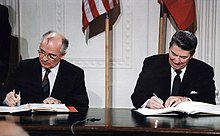
- Ronald Reagan was elected U.S. president in 1980. In international affairs, Reagan pursued a hardline policy towards preventing the spread of communism, initiating a considerable buildup of U.S. military power to challenge the Soviet Union. He further directly challenged the Iron Curtain by demanding that the Soviet Union dismantle the Berlin Wall.
- The American crack epidemic. [citation needed]
- The Professional Air Traffic Controllers Organization (1968) (PATCO) declared a strike on August 3, 1981, seeking better working conditions, better pay, and a 32-hour workweek. The strike caused considerable disruption of the U.S. air transportation system. Resolution came when Ronald Reagan fired over 11,000 striking air traffic controllers who had ignored the order, banning them from federal service for life. After seeking appeals, many of the controllers were re-hired while the FAA attempted to replace much of their air traffic control staffing. The remainder continued to be banned until President Clinton lifted the final aspects in 1993.
- Political unrest in the province of Quebec, which, due to the many differences between the dominant francophone population and the anglophone minority, and also to francophone rights in the predominantly English-speaking Canada, came to a head in 1980 when the provincial government called a public referendum on partial separation from the rest of Canada. The referendum ended with the "no" side winning majority (59.56% no, 40.44% yes).
- Chile (1988–89). This marked the end of the Operation Condorfor 30 years.
Europe


- The European Community's enlargementcontinued with the accession of Greece in 1981 and Spain and Portugal in 1986.
- In 1983, socialist to hold the office of Prime Minister of Italy; he remained in power until 1987, becoming one of the longest-serving Prime Ministers in the history of Italian Republic. At the end of his presidency the Mani pulitecorruption scandal broke up, causing the collapse of the political system.
- Significant political reforms occurred in a number of communist countries in eastern Europe as the populations of these countries grew increasingly hostile and politically active in opposing communist governments. These reforms included attempts to increase individual liberties and market liberalization, and promises of democratic renewal. The collapse of communism in eastern Europe was generally peaceful, the exception being Romania, whose leader Nicolae Ceaușescu tried to keep the people isolated from the events happening outside the country. While making a speech in Bucharest in December 1989, he was booed and shouted down by the crowd, and then tried to flee the city with his wife Elena. Two days later, they were captured, charged with genocide, and shot on Christmas Day.
- In Memorandum of the Serbian Academy of Sciences and Arts followed by the agenda of Serbian communist leader Slobodan Miloševićwho aggressively pushed for increased political influence of Serbs in the late 1980s, condemning non-Serb Yugoslav politicians who challenged his agenda as being enemies of Serbs.
- There was continuing civil strife in Northern Ireland, including the adoption of hunger strikes by Irish Republican Army prisoners seeking the reintroduction of political status.
- Mikhail Gorbachev became leader of the Soviet Union in 1985, and initiated major reforms to the Soviet Union's government through increasing the rights of expressing political dissent and opening elections to opposition candidates (while maintaining legal dominance of the Communist Party). Gorbachev pursued negotiation with the United States to decrease tensions and eventually end the Cold War.
- During the Revolutions of 1989, most of the communist governments in Eastern Europe collapsed. The fall of the Berlin Wall in 1989 would be followed in 1990 by the German reunification.
- The United Kingdom was governed by the privatisation of industries and the de-regulation of stock markets echoing similar reforms of U.S. President Ronald Reagan. She was also a staunch opponent of communism, earning her the nickname The Iron Lady.
- Poor industrial relations marked the beginning of the decade; the UK miners' strike (1984–85) was a major industrial action affecting the UK coal industry. The strike by the National Union of Mineworkers (NUM) was led by Arthur Scargill, although some NUM members considered it to be unconstitutional and did not observe it. The BBC has referred to the strike as "the most bitter industrial dispute in British history."[9] At its height, the strike involved 142,000 mineworkers, making it the biggest since the 1926 General Strike.[10]
- In November 1982, Leonid Brezhnev, who had led the Soviet Union since 1964, died. He was followed in quick succession by Yuri Andropov, the former KGB chief, and Konstantin Chernenko, both of whom were in poor health during their short tenures in office.
Asia
- Following the Roh Tae Woo, the first democratic ruler of the country, which saw its international prestige greatly rise with hosting the Olympics in 1988. Roh pursued a policy of normalizing relations with China and the Soviet Union, but had to face militant left-wing student groups who demanded reunification with North Korea and the withdrawal of US troops.
- In the Philippines, after almost 20 years of dictatorship, Philippine president Ferdinand Marcos left the presidency and was replaced by Corazon Aquino through the "People Power Revolution" from February 22 to 25, 1986. This has been considered by some a peaceful revolution despite the fact that the Armed Forces of the Philippines issued an order to disperse the crowds on EDSA (the main thoroughfare in Metro Manila).
- Democratization in South Korea and Taiwan, having lasted 42 and 27 years under the authoritarian regime since the end of World War II and the Korean War (including the lifting of martial law in Taiwan and the first direct presidential elections in South Korea).
- The 1988 Summer Olympics were held in South Korea, the first time the country hosted them.
Assassinations and attempts


Prominent assassinations, targeted killings, and assassination attempts include:
| Date | Description |
|---|---|
| April 12, 1980 | Americo-Liberian rule in Liberia.[11]
|
| March 30, 1981 | Ronald Reagan, 40th President of the United States, was shot in Washington, D.C. by a mentally disturbed individual. Reagan's press secretary, James Brady, was also shot, along with a police officer and a U.S. Secret Service agent.[12] |
| May 13, 1981 | Saint Peter's Square.[13]
|
| August 30, 1981 | People's Mujahedin of Iran, though others allege the bombing was orchestrated by political rivals within the Islamic Republican Party.[14][15]
|
| October 6, 1981 | Anwar Sadat, 3rd President of Egypt, is assassinated at a military parade in Cairo.[16] |
| August 21, 1983 | Benigno Aquino Jr., a longtime political opponent of Philippine president Ferdinand Marcos, is killed after landing in the Philippines after three years of self-imposed exile.[17] |
| October 12, 1984 | Deputy Chief Whip.[18]
|
| October 31, 1984 | Sikh Militant stronghold in Amritsar earlier in the decade.[19]
|
| February 28, 1986 | Olof Palme, Prime Minister of Sweden, is assassinated while walking home from a cinema in Stockholm.[20] |
| October 15, 1987 | Thomas Sankara, 1st President of Burkina Faso, is assassinated in a coup organized by his former colleague, Blaise Compaoré.[21] |
Disasters
Natural disasters
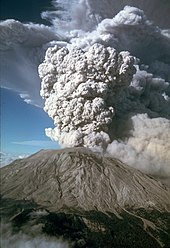
- Mount St. Helens erupted in Washington, U.S. on May 18, 1980, killing 57 people.
- On October 17, 1989, the Loma Prieta earthquake struck the San Francisco Bay Area during Game 3 of the 1989 World Series, gaining worldwide attention. Sixty-five people were killed and thousands injured, with major structural damage on freeways and buildings and broken gas-line fires in San Francisco, California. The cost of the damage totaled $13 billion (1989 USD).
- The 1988–89 North American drought decimated the US with many parts of the country affected. This was the worst drought to hit the United States in many years. The drought caused $60 billion in damage (between $80 billion and $120 billion for 2008 USD). The concurrent heat waveskilled 5,800 to 17,000 people in the United States.
- Hurricane Allen (1980), Hurricane Alicia (1983), Hurricane Gilbert (1988), Hurricane Joan (1988), and Hurricane Hugo (1989) were some notably destructive Atlantic hurricanes of the 1980s.
- Other natural disasters of the 1980s include the 1982–1983 USSR.
Non-natural disasters
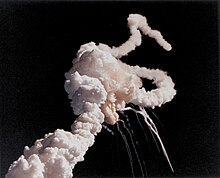
- On April 25, 1980, Dan-Air Flight 1008 crashed on approach to Tenerife in the Canary Islands. All 146 people on board were killed.
- On August 19, 1980, Saudia Flight 163 caught fire moments after takeoff from the Saudi Arabian capital of Riyadh. The flight quickly returned to the airport, but evacuation of the plane was delayed and all 301 people aboard died.
- On July 9, 1982, Pan Am Flight 759 was forced down by a wind shear microburst, killing 153 people.
- On June 2, 1983, an internal fire on Air Canada Flight 797 forced the plane to divert to Cincinnati/Northern Kentucky International Airport. Ninety seconds after the plane landed and the doors were opened, flashover conditions developed and the plane's interior immediately became engulfed in flames, killing 23 passengers, including Canadian folk musician Stan Rogers.
- On September 1, 1983, Soviet Union fighter jets shot down Korean Air Lines Flight 007, which was carrying 269 people, none of whom survived.
- In 1984, the Bhopal, India, killing 3,000 immediately and ultimately claiming 15,000–20,000 lives.
- On August 2, 1985, Dallas/Fort Worth International Airport in Texas. 137 people were killed while 27 survived.
- On June 23, 1985, Air India Flight 182, flight from Montreal Canada is blown up over Irish waters by a bomb placed in the luggage compartment. This was the greatest act of terrorism until the September 11 attacks of 2001.
- Japan Airlines Flight 123, carrying 524 people, crashed on August 12, 1985, while on a flight from Tokyo to Osaka killing 520 of the people on board, leaving four survivors. This was, and still is, the worst single-plane crash ever.
- On December 12, 1985, Gander, Newfoundland. All 256 people on board, many of them U.S. servicemen returning home from duty overseas, perished.
- On January 28, 1986, the NASA Space Shuttle Challenger disintegrated 73 seconds after launch, killing all of the crew on board. This was the first disaster involving the destruction of a NASA space shuttle. A faulty O-ring was the cause of the accident.
- On February 8, 1986 near Hinton, Alberta, Canada (west of Edmonton) a westbound Canadian National (CN Rail) freight train slammed head-on into an oncoming eastbound VIA Rail passenger train, resulting in twenty-six casualties & dozens of serious injuries. A judicial inquiry that followed concluded that the freight train crew failed to obey signals (which were working properly) & ran through the switch off a siding, back into the single main track. It was also noted that the crew of the freight train were possibly asleep on duty.
- On April 26, 1986, the Chernobyl disaster, a large-scale nuclear meltdown in the Ukrainian SSR, Soviet Union, spread a large amount of radioactive material across Europe, killing 47 people, dooming countless others to future radiation-related cancer, and causing the displacement of 300,000 people.
- On June 14, 1986, Fantasyland's Mindbender inside West Edmonton Mall, derails and kills 3 people, injuring one, and slams into a concrete post.
- On August 31, 1986, Piper Cherokee over Cerritos, California, killing everyone on both airplanes and several others on the ground. On the same day, the Soviet passenger ship Admiral Nakhimov sank after colliding with the bulk carrier Pyotr Vasev in the Black Sea, killing 423 people.
- On May 9, 1987, an LOT Flight 5055caused an in-flight fire on board the airliner, which subsequently crashed, killing all 183 passengers and crew.
- On August 16, 1987, Detroit Wayne Airport in Michigan, killing 156 people.
- On November 28, 1987, a fire broke out on South African Airways Flight 295, eventually causing the aircraft to crash into the Indian Ocean. All 159 aboard were killed.
- On December 7, 1987, 43 people were killed when an irate former USAir employee went on a rampage aboard PSA Flight 1771.
- On December 20, 1987, the Philippine passenger ferry MV Doña Paz burned and sank after colliding with the oil tanker MT Vector. With an estimated death toll of over 4,000, this was and remains the world's deadliest peacetime maritime disaster.
- On July 3, 1988, Iran Air Flight 655 was shot down by the U.S. missile cruiser USS Vincennes over the Strait of Hormuz, killing all 290 people on the plane. The event is one of the most controversial aviation occurrences of all time, with the true cause disputed between the Americans and the Iranians.
- On December 21, 1988, an American passenger 747 airliner en route from Frankfurt to Detroit (via London and New York) Pan Am Flight 103 was destroyed by a bomb while it was flying over Lockerbie, Scotland, killing the 259 passengers and crew members on board and 11 people on the ground. This was the worst terrorist attack to have occurred on British soil.
- On March 24, 1989, the oil tanker Exxon Valdez ran aground on Bligh Reef in Alaska's Prince William Sound spilling an estimated equivalent of 260,000 to 750,000 barrels of crude oil. Although not among the largest oil spills in history, its remote and sensitive location made it one of the most devastating ecological disasters ever. The after effects of the spill continue to be felt to this day.
- On April 15, 1989, The Hillsborough disaster occurs during a FA Cup Semi-Final in Sheffield, England fatally crushing 96 football fans and injuring nearly 1,000 more.
- On July 19, 1989, United Airlines Flight 232, carrying 296 people, suffered an in-flight engine failure and was forced to crash-land at Sioux City, Iowa. 185 survived, while 111 were killed when the plane burst into flames upon touchdown.
Science and technology
Medicine and biology
The 1980s had many fundamental advances in medicine and biology. The first
Electronics and computers
-
The ColecoVision video game System.
-
The Nintendo Entertainment System's Control Deck.
-
Atari 7800 System (PAL system with Joypad controller).
-
Mega Drive, known as the Genesis in North America, succeeded the Master System.
The
-
IBM PC (model 5150), the first DOS-compatible PC was released in 1981. The IBM PCs and compatible models from other vendors would become the most widely used computer systems in the world.
-
Commodore 64, with sales estimated at more than 17 million units between 1982 and 1994 became the best-selling computer model of all time.
-
VTech Laser 200, 8-bit home computer from 1983
-
The Macintosh 128K, the first commercially successful personal computer to use a graphical user interface, was introduced to the public in 1984.[25]
-
The IBM PC Convertible (model 5140; 1986), the first DOS-compatible PC to be a laptop and to use the standard 3+1⁄2-inch floppy disk drives.
Walkman and boomboxes, invented during the late 1970s, became very popular as they were introduced to various countries in the early 1980s, and had a profound impact on the music industry and youth culture. Consumer VCRs and video rental stores became commonplace as VHS won out over the competing Betamax standard. In addition, in the early 1980s various companies began selling compact, modestly priced synthesizers to the public. This, along with the development of Musical Instrument Digital Interface (MIDI), made it easier to integrate and synchronize synthesizers and other electronic instruments, like drum machines, for use in musical composition.
High definition television (HDTV) of both the analog and digital variety were first developed in the 1980s though their use did not become widespread until the mid-2000s.
In 1981, Hayes Microcomputer Products started selling the Smartmodem. The Smartmodem paved the way for the modern modems that exist today, mainly because it was the first modem to transform what had previously required a two-stage process into a process involving only one stage. The Smartmodem contributed to the rise in popularity of BBS systems in the 1980s and early 1990s, which were the main way to connect to remote computers and perform various social and entertainment activities before the Internet and the World Wide Web finally became popular in the mid-1990s.
-
In 1984, the Motorola DynaTAC 8000X becomes the first commercially available mobile phone model
-
During the decade the standardization of Group 3 facsimile terminals by the International Telecommunication Union contributed to the significant spread of the fax machine.
-
Hayes's Smartmodem
Information technology
- During the decade Microsoft released the operating systems MS-DOS (1981), Windows 1.0 (1985), and Windows 2.0 (1987).
- The CD - the most basic CD ("Digital Audio Compact Disc") was released in October 1982 for distribution and listening to digital audio, and at the time contained up to 74 minutes of music.
- TCP/IP on January 1, 1983, when the new protocols were activated. The TCP/IP protocol will become the dominant communications protocol from then onwards, and would be used as the foundation on which the Internetwould be based.
- The GNU Project (1983). The Free Software Foundation (1985).
- FidoNet - In 1984, FidoNet was launched, enabling BBS users to send private messages (e-mails) and public messages (in the forum) between all BBS systems that were connected to the FidoNet network, in addition to sending files to each other. The rise in popularity and availability of the Internet around the world around the mid-1990s eventually contributed to the irrelevance of FidoNet.
- Hypertext Transfer Protocol (HTTP) client and server via the internet. In the coming years Berners-Lee developed the system which would later become the foundation of the World Wide Web.
-
In 1981, Microsoft introduced the MS-DOS operating system, which would become the world's most widely used operating system in the 1980s and first half of the 1990s.
-
The most basicCDwas first introduced in October 1982 for the purpose of distribution and listening to digital audio
-
In 1989, the British computer scientist Tim Berners-Lee first proposed the World Wide Web, which he would develop in the coming years
Space exploration
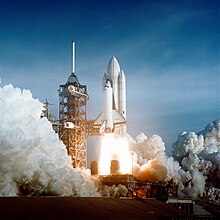
American interplanetary probes continued in the 1980s, the Voyager duo being the most known. After making a flyby of Jupiter in 1979, they went near Saturn in 1980–1981. Voyager 2 reached Uranus in 1986 (just a few days before the Challenger disaster), and Neptune in 1989 before the probes exited the Solar System.
No American probes were launched to Mars in the 1980s, and the Viking probes, launched there in 1975, completed their operations by 1982. The Soviets launched two Mars probes in 1988, but they failed.
The arrival of Halley's Comet in 1986 was met by a series of Soviet, Japanese and European Space Agency (ESA) probes, namely Halley Armada.
After a six-year hiatus, American space flights with astronauts resumed with the launch of the Space Shuttle Columbia in April 1981. The shuttle program progressed smoothly from there, with three more orbiters entering service in 1983–1985. But that all came to an end with the tragic loss of the Challenger (STS-51-L) on January 28, 1986, taking with it seven astronauts, including Christa McAuliffe, who was to have been the first teacher in space. In full view of the world, a faulty O-ring on the right solid rocket booster allowed hot gases to burn through the external fuel tank and cause it to explode, destroying the shuttle in the process. Extensive efforts were made to improve NASA's increasingly careless management practices, and to make the shuttle safer. Flights resumed with the launch of Discovery in September 1988.
The Soviet program with cosmonauts went well during the decade, experiencing only minor setbacks. The Salyut 6 space station, launched in 1977, was replaced by Salyut 7 in 1982. Then came Mir in 1986, which ended up operating for more than a decade, and was destined to be the last in the line of Soviet space stations that had begun in 1971. One of the Soviet Union's last "superprojects" was the Buran space shuttle; it was only used once, in 1988.
Automobiles
The American auto industry began in the 1980s in a thoroughly grim situation, faced with poor quality control, rising import competition, and a severe economic downturn.
As the decade progressed, cars became smaller and more efficient in design. In 1983, Ford design teams began to incorporate aerodynamic styling to decrease drag while in motion. The Thunderbird was one of the first cars to receive these design changes. In 1985, Ford released the Taurus with a design that was revolutionary among domestic mass market automobiles.
General Motors began suffering significant losses in the late 1980s, partially the result of chairman Roger Smith's restructuring attempts, and partially because of increasingly dated cars. An example were customers who increasingly purchased European luxury cars rather than Cadillacs. In 1985, GM started Saturn (the first new American make since the Edsel), with the goal of producing high-quality import fighters. Production would not begin until 1990.
Chrysler introduced its new compact, front-wheel drive K-cars in 1981. Under the leadership of Lee Iacocca, the company turned a profit again the following year, and by 1983 paid off its government loans. A succession of models using this automobile platform followed. The most significant were the minivans in 1984. These proved a to be popular and they would dominate the van market for more than a decade. In 1987, Chrysler purchased the Italian makes of Lamborghini and Maserati. In the same year, Chrysler bought AMC from Renault laying to rest the last significant independent U.S. automaker, but acquiring the hugely profitable Jeep line and continuing the Eagle brand until the late 1990s.[29]
The
The imposition of CAFE fuel-mileage standards in 1979 spelled the end of big-block engines, but performance cars and convertibles reemerged in the 1980s. Turbochargers were widely used to boost the performance of small cars, and technology from
The Eighties marked the decline of European brands in North America by the end of the decade.
Economics
- The early 1980s was marked by a severe global economic recession that affected much of the developed world.
- Inflation peaked in the U.S. in April 1980 at 14.76% and subsequently fell to a low of 1.10% in December 1986 but then rebounded to 4.65% at the end of the decade.[30]
- Finland's economy grew by almost the fastest pace in the world, which eventually culminated in the recession of the 1990s Finnish economy. In Finland, the 1980s were called the "Nousukausi", or "economic upswing".
- International debt crisis in developing countries, reliance of these countries on aid from the International Monetary Fund.
- Revival of laissez faire/neoliberal economics in the developed world led by the UK and US governments emphasising reduced government intervention, lower taxes and deregulation of the stock markets associated with an economic revival in the mid- to late-1980s. Consumers became more sophisticated in their tastes (a trend begun in the 1960s), and things such as European cars and designer clothing became fashionable in the US.[citation needed]
- Brazil and Mexico suffers from a 21-year military dictatorship, and a controversial presidential electionin 1988 amid charges of voter fraud, bribery, corruption and other abuses of power.
- Enactment of the Canada–United States Free Trade Agreement in 1989 to further establish a strong economic bond between the two prosperous neighbor countries of North America.
- In the accelerate and restructurethe Soviet economy through reforms to decentralize production and distribution systems.
- Under the leadership of Tiananmen Square protests of 1989 which were suppressed by the People's Liberation Army.
- The Solidarity movement began in Poland in 1980, involving workers demanding political liberalization and democracy in Poland. Attempts by the Communist government to prevent the rise of the Solidarity movement failed and negotiations between the movement and the government took place. Solidarity would be instrumental in encouraging people in other communist states to demand political reform.
- The financial world and the stock market were glamorized in a way they had not been since the 1920s, and figures like Donald Trump and Michael Milken were widely seen as symbols of the decade. Widespread fear of Japanese economic strength would grip the United States in the '80s.
- The "Black Monday" stock market crash on October 19, 1987, decreased the value of the Dow Jones Industrial Average by more than 22%, causing widespread secondary drops in world markets.
- During the 1980s, for the first time in world history, transpacific trade (with East Asia, such as China, and Latin America, primarily with Mexico) equaled that of transatlantic trade (with Western Europe or with neighboring Canada),[31] solidifying American economic power.[32]
- The Savings and Loan crisis and Keating five scandal.
- The phrase Big Bang, used in reference to the sudden deregulation of financial markets, was coined to describe measures, including abolition of fixed commission charges and of the distinction between stockjobbers and stockbrokers on the London Stock Exchange and change from open-outcry to electronic, screen-based trading, effected by Margaret Thatcher in 1986.
Popular culture
-
The third generation of video game consoles like SG-1000, Master System, Nintendo Entertainment System (pictured), and Atari 7800 were released in the 1980s.
-
TV shows like Full House, The Golden Girls, Miami Vice, Family Ties, Cheers, Dynasty, ALF, and Dallas were popular in the 1980s.
-
Michael Jackson's Thriller became the best-selling album of all time, followed by the critically acclaimed album Bad five years later, and a musical film adaptation titled Moonwalker.
-
MTV was launched in 1981, which had a great influence on the way music is marketed and on the rise of many prominent rock stars during the decade. Early CGI also caught on within music videos in the 1980s, including the popular music video for "Money for Nothing".
-
Technological advancements like early personal computers, the IBM Personal Computer, Commodore 64 (pictured), and Macintosh 128K were popular in the 1980s.
-
Polaroid-branded cameras were popular and at their height in the 1980s.
-
He-Man and the Masters of the Universe and other cartoons like The Smurfs, The Transformers, Inspector Gadget, DuckTales, ThunderCats, and Alvin and the Chipmunks were popular in the 1980s.
-
Cassette tapes used for music listening and operating the Sony Walkman were popular in the decade.
-
Six Olympic Games were held in the 1980s, Lake Placid and Moscow in 1980, Sarajevo and Los Angeles in 1984, Calgary and Seoul in 1988.
-
1980s teen-oriented films like Fast Times at Ridgemont High, Ferris Bueller's Day Off, Back to the Future, The Breakfast Club, Stand by Me, and The Outsiders were popular under the Reagan era.
-
After a turbulent decline in the 1960s and 1970s, animation began to thrive again due to the success and popularity of films such as Who Framed Roger Rabbit, Oliver & Company, The Land Before Time, and The Little Mermaid.
-
Along with early hip hop culture like 1988's Straight Outta Compton, graffiti became more mainstream in the 1980s.
-
Before the more mainstream use of the internet in the 1990s, many computer systems had searchable databases during the decade. These databases could be used to search a students' grades, computerized library and video rental systems to track books and video rentals.
-
George H.W. Bushbecame president in 1989.
Music

In the United States,
The advent of numerous new technologies had a significant impact on 1980s music, and led to a distinct production aesthetic that included synthesizer sounds, drum machines and drum reverb.
The '80s were above all a time of international
Cassettes made private music portable—and public. Compact discsinflated profitability as they faded into the background of busy lives.
—Robert Christgau in Christgau's Record Guide: The '80s (1990)[34]
The 1980s were also known for song parodies becoming more mainstream, a trend led by parodic musician
By 1989, the

The techno style of electronic dance music emerged in Detroit, Michigan, during the mid- to late 1980s. The house music style, another form of electronic dance music, emerged in Chicago, Illinois, in the early 1980s. It was initially popularized in mid-1980s discothèques catering to the African-American, Latino and gay communities, first in Chicago, then in New York City and Detroit. It eventually reached Europe before becoming infused in mainstream pop and dance music worldwide.
Several notable musical artists died of unnatural causes in the 1980s:
In 1984, the British supergroup
Film

Critically acclaimed films
- Oscar winners for Best Picture: Ordinary People (1980), Chariots of Fire (1981), Gandhi (1982), Terms of Endearment (1983), Amadeus (1984), Out of Africa (1985), Platoon (1986), The Last Emperor (1987), Rain Man (1988), Driving Miss Daisy (1989).
- The highest-grossing films of the decade are (in order from highest to lowest domestic grossing):
The film industry
The 1980s saw the return of studio-driven films, coming from the filmmaker-driven New Hollywood era of the 1970s.[36] The period was when 'high concept' films gained popularity, where movies were to be easily marketable and understandable, and, therefore, they had short cinematic plots that could be summarized in one or two sentences. The modern Hollywood blockbuster is the most popular film format from the 1980s. Producer Don Simpson[37] is usually credited with the creation of the high-concept picture of the modern Hollywood blockbuster. In the mid-1980s, a wave of British directors, including Ridley Scott, Alan Parker, Adrian Lyne and Tony Scott (with the latter directing a number of Don Simpson films) ushered in a new era of blockbusters using the crowd-pleasing skills they had honed in UK television commercials.[38]
A significant development in the home media business is the establishment of The Criterion Collection in 1984, an American company "dedicated to gathering the greatest films from around the world and publishing them in editions that offer the highest technical quality". Through their releases, they were able to introduce what is now a standard to home video: letterboxing to retain the original aspect ratio, film commentaries and supplements/special features.[39][40]
Live-action films
The 1980s also saw the golden age of "
Horror films were a popular genre during the decade, with several notable horror franchises being born during the 1980s. Among the most popular were the
Several action film franchises were also introduced during the 1980s. The most popular of these were the
Five more
Animated films
Although
The 1980s also saw a surge of Japanese anime films: Hayao Miyazaki's The Castle of Cagliostro and Nausicaä of the Valley of the Wind were extremely successful enough to lead the foundation of Studio Ghibli which would then produce several successful films of the decade including Castle in the Sky, My Neighbor Totoro, Grave of the Fireflies and Kiki's Delivery Service. Other well-known anime films of that decade include Golgo 13: The Professional, Macross: Do You Remember Love?, Lensman, Vampire Hunter D, Akira, Little Nemo: Adventures in Slumberland and the Urusei Yatsura film series. Additionally, the first-ever theatrical animated franchise: the Doraemon film series (based on the anime and manga series of the same name) began in 1980 with the release of Doraemon: Nobita's Dinosaur.
Television
Music video channel MTV was launched in the United States in 1981 and had a profound impact on the music industry and popular culture further ahead, especially during its early run in the 1980s and early 1990s.
The 1980s was a decade of transformation in television. Cable television became more accessible and therefore, more popular. By the middle of the decade, almost 70% of the U.S. population had cable television and over 85% were paying for cable services such as HBO or Showtime.[41] People who lived in rural areas where cable TV service was not available could still access cable channels through a large (and expensive) satellite dish, which, by the mid-1990s, was phased out in favor of the small rooftop dishes that offer DirecTV and Dish Network services.
The 1980s also saw the debut of
In 1980, the original anime television series Astro Boy.
During the 1980s, police procedural television series The Bill, stop-motion animated television series Pingu, Postman Pat, Fireman Sam and Bertha, and sitcoms were also becoming popular, including Bosom Buddies, Family Ties, Cheers, Newhart, Too Close for Comfort, The Cosby Show, Night Court, Full House and Married... with Children, which was the first show to hit the Fox airwaves on launch in 1987.
In 1984, Britt Allcroft and Rev W. Awdry original television series Thomas the Tank Engine & Friends.
In 1985, two sitcoms premiered on the same day: The Golden Girls, starring Bea Arthur, Betty White, Rue McClanahan and Estelle Getty, which lasted for seven seasons and was also the first comedy ever to feature four older women in title TV roles, and 227, which was originally the sitcom vehicle for Marla Gibbs, who previously starred in The Jeffersons, and which also launched Jackée Harry's career. Sketch comedy and variety show Saturday Night Live experienced turbulence for much of the 1980s, however, it propelled the successful careers of cast members like Bill Murray, Eddie Murphy, Martin Short, and Julia Louis-Dreyfus.
The year 1986 marked the debut of the
TV talk shows expanded in popularity; The Tonight Show Starring Johnny Carson remained popular into its third decade, and some of the most viewed newer shows were hosted by Geraldo Rivera, Arsenio Hall and David Letterman.[43]
TV documentary shows of the 1980s that were popular included
On July 29, 1981, The Wedding of Prince Charles and Lady Diana Spencer was watched by a television audience of an estimated 750 million people from around the world.
Scandal rocked TV evangelism when in 1987 evangelist
The 1980s also was prominent for spawning several popular animated shows such as
In 1988, the original anime television series Wowser.
In 1989, the original television series Tugs and stop-motion animated series Wallace and Gromit.
Sports
- The Soviet invasion of Afghanistan.
- The 1980 Winter Olympics were well remembered for the Miracle on Ice, where a young United States hockey team defeated the heavily favored Soviet Red Army team and went on to win the gold medal.
- The 1980 Playoffs to the 1984 Playoffs).
- The Edmonton Eskimos of the Canadian Football League won the first three Grey Cupchampionships of the decade (having won the last two of the previous decade), adding one more in 1987.
- The 1983 Cricket World Cup was won by India while the 1987 Cricket World Cup was won by Australia.
- The 1984 Winter Olympics were held in Sarajevo, Yugoslavia (now Sarajevo, Bosnia and Herzegovina). Yugoslavia became the second communist country to host the Olympic Games, but unlike the Soviet Union in 1980, there were no boycotts of the Games by Western countries.
- The 1984 Summer Olympics in Los Angeles were boycotted by the Soviet Union and most of the Communist world (China, Romania, and Yugoslavia participated in the games) in retaliation for the boycott of the 1980 Games in Moscow.
- The Disney movie Cool Runningsfive years later.
- The 1988 Summer Olympics were held in Seoul, South Korea. Attempts to include North Korea in the games were unsuccessful and it boycotted along with six other countries, but with 160 nations participating, it had the highest attendance of any Olympics to date.
- FIA banned Group B rallying after a series of deaths and injuries took place in the 1986 season.
- Canadian hockey player Wayne Gretzky's rise to fame in the NHL coincided with the Edmonton Oilers' first four Stanley Cup championships (1984, 1985, 1987, and 1988) and becoming the second NHL dynasty team of the 1980s.
- On August 9, 1988, in what became the biggest trade in NHL history (also known as "The Trade Of The Century"), Wayne Gretzky was traded along with teammates Marty McSorley and Mike Krushelnyski from Edmonton to the Los Angeles Kings in exchange for Martin Gélinas, Jimmy Carson, three first round draft picks, and US$15 million cash (approximately $18 million CAD in 1988).
- American basketball player NBA during the mid-1980s, raising the sport's popularity. He started his professional career alongside the likes of Hakeem Olajuwon, Charles Barkley, Alvin Robertson, and John Stockton in what is considered one of the greatest drafts in the league's history, the 1984 NBA draft.[45][46][47]
- On November 26, 1986, Mike Tyson became the youngest boxing Heavyweight Champion in history at age 20.
- The 1980s professional wrestling boom was in full effect.
- On March 31, 1985, the WWF presented the first WrestleMania at Madison Square Garden in New York City with an attendance of 19,121.
- On March 29, 1987, WrestleMania III had a record attendance of 93,173, the largest recorded attendance for a live indoor sporting event in North America until 2010. This also remained the WrestleMania attendance record until WrestleMania 32 at AT&T Stadium on April 3, 2016, in Arlington, Texas
- On February 5, 1988, the live broadcast of WWF's Nielsen rating and 33 million viewers, both records for American televised wrestling.[48]
- West Germany won the 1980 UEFA championship.
- Italy won the 1982 FIFA World Cup in Spain.
- France hosted and won the 1984 UEFA championship.
- Argentina won the 1986 FIFA World Cup in Mexico. Goal of the Century.
- The Netherlands won the 1988 UEFA championship.
- Hawthorn Football Club dominated Australian football, reaching seven successive VFL Grand Finals and winning the premiership in 1983, 1986, 1988, and 1989
- League Cuptitles from 1981 to 1984.
- Other highly successful club sides of the 1980s include Flamengo(four times Brazilian champions, South American and International Cup winners in 1981).
- In the Washington Redskins also enjoyed success throughout the decade, winning two of their three Super Bowls under the leadership of head coach Joe Gibbs.
- Celtics-Lakers rivalry.
- Loma Prieta Earthquaketaking place occurring at 5:04 respectively.
- Disc ultimate league play is introduced to Canada in 1980 by Ken Westerfield starting the first disc ultimate league (TUC), in Toronto.
Video gaming
Popular video games include: . Pac-Man was the first game to achieve widespread popularity in mainstream culture and the first game character to be popular in his own right.
Handheld electronic LCD games was introduced into the youth market segment. The primary gaming computers of the 1980s emerged in 1982: the Commodore 64 and ZX Spectrum.
-
The game Pac-Man (1980) became immensely popular and an icon of 1980s popular culture
-
The popular 1980s arcade gameDonkey Kong
-
Game & Watch was the popular mobile game during the decade until it was replaced in the early 1990s with more advanced Game Boy.
Fashion

The beginning of the decade saw the continuation of the clothing styles of the late 1970s and evolved into heavy metal fashion by the end. However, fashion became more extravagant during the 1980s. The 1980s included teased and colourfully-dyed hair, ripped jeans, neon clothing and many colours and different designs which at first were not accepted.
Significant hairstyle trends of the 1980s include the perm, the mullet, the Jheri curl, the hi-top fade, and big hair.
Significant clothing trends of the 1980s include
Miniskirts returned to mainstream fashion in the mid-1980s after a ten-year absence, mostly made of denim material. From that point on, miniskirts and minidresses have remained in mainstream fashion to this day.
Makeup on the 1980s was aggressive, shining and colourful. Women emphasised their lips, eyebrows and cheeks with makeup. They used much blush and eyeliner.
Additional trends of the 1980s include athletic
-
Tom Bailey of the Thompson Twins in 1986 with the trendy Big hair style achieved with liberal applications of mousseand hairspray
-
Ray-Ban sunglasses
-
Rubik's Cube was a popular toy during the decade
-
Trendy 1980s pleated acid-washed jeans
-
Globally popular musician and actress Cher was a prominent fashion icon of the era
-
Journalist Lucy Morgan holding one of the very first brick mobile phones, as well as a 1980s video camera
-
In the 1980s, Care Bears were popular for children and seen on greeting cards, clothing items, accessories and other merchandise.
-
Heavy metal fashion emerged in the 1980s, inspired by bands like Metallica and Mournblade (pictured).
Additional significant events
- The Wedding of Prince Charles and Lady Diana Spencer. Events were held around Commonwealth countries to mark the wedding.
People
Actors and entertainers
- Lou Albano
- Alan Alda
- Karen Allen
- Nancy Allen
- Kirstie Alley
- Julie Andrews
- Bea Arthur
- Dan Aykroyd
- Kevin Bacon
- Kenny Baker
- Christopher Daniel Barnes
- Kim Basinger
- James Belushi
- Jodi Benson
- Daniel Beretta
- Tom Berenger
- Sandahl Bergman
- Michael Biehn
- Linda Blair
- Mel Blanc
- Earl Boen
- Ernest Borgnine
- Matthew Broderick
- Pierce Brosnan
- Roscoe Lee Browne
- Delta Burke
- Carol Burnett
- Nicolas Cage
- John Candy
- Pat Caroll
- Johnny Carson
- Dixie Carter
- Jackie Chan
- Geraldine Chaplin
- Chevy Chase
- Rae Dawn Chong
- Andrew Dice Clay
- Glenn Close
- Joan Collins
- María Conchita Alonso
- David Copperfield
- Bill Cosby
- Kevin Costner
- Tom Cruise
- Billy Crystal
- Jamie Lee Curtis
- Willem Dafoe
- Tyne Daly
- Ted Danson
- Tony Danza
- Richard Darbois
- Brian Dennehy
- Robert De Niro
- Johnny Depp
- Danny DeVito
- Lucinda Dickey
- Alain Dorval
- Kirk Douglas
- Michael Douglas
- David Doyle
- Brad Dourif
- Patrick Duffy
- Clint Eastwood
- Robert Englund
- Emilio Estevez
- Linda Evans
- Corey Feldman
- Albert Finney
- Carrie Fisher
- Laurence Fishburne
- Jane Fonda
- June Foray
- Harrison Ford
- John Forsythe
- Jodie Foster
- Michael J. Fox
- Dennis Franz
- Morgan Freeman
- Anthony Franciosa
- Eva Gabor
- Richard Gere
- Gina Gershon
- Estelle Getty
- Mel Gibson
- Lillian Gish
- Sharon Gless
- Danny Glover
- Jeff Goldblum
- Whoopi Goldberg
- Louis Gossett Jr.
- Linda Gray
- Alec Guinness
- Buddy Hackett
- Gene Hackman
- Larry Hagman
- Mark Hamill
- Linda Hamilton
- Tom Hanks
- Daryl Hannah
- Woody Harrelson
- David Hasselhoff
- Corey Haim
- Rutger Hauer
- Goldie Hawn
- Marilu Henner
- Lance Henriksen
- Charlton Heston
- Catherine Hicks
- Judd Hirsch
- Don Johnson
- James Earl Jones
- Andy Kaufman
- Sam Kinison
- Angela Lansbury
- Spike Lee
- David Letterman
- Judith Light
- John Lithgow
- Christopher Lloyd
- Heather Locklear
- Shelley Long
- Rob Lowe
- Dolph Lundgren
- Steve Martin
- Rue McClanahan
- Alyssa Milano
- Eddie Murphy
- Bill Murray
- Judd Nelson
- Bob Newhart
- Paul Newman
- Jack Nicholson
- Brigitte Nielsen
- Nick Nolte
- Chuck Norris
- Al Pacino
- Chris Penn
- Sean Penn
- Rhea Perlman
- Ron Perlman
- Michelle Pfeiffer
- Patrick Poivey
- Kelly Preston
- Victoria Principal
- Jürgen Prochnow
- Dennis Quaid
- Meg Ryan
- Phylicia Rashad
- John Ratzenberger
- Vanessa Redgrave
- Christopher Reeve
- Jean Reno
- Alan Rickman
- Molly Ringwald
- Eric Roberts
- Mickey Rourke
- Kurt Russell
- Daniel Russo
- Chris Sarandon
- Fred Savage
- Arnold Schwarzenegger
- Steven Seagal
- Tom Selleck
- Charlie Sheen
- Martin Sheen
- Sylvester Stallone
- Patrick Stewart
- Meryl Streep
- Donald Sutherland
- Patrick Swayze
- Max von Sydow
- Mr. T
- Alan Thicke
- Philip Michael Thomas
- Brian Thompson
- John Travolta
- Kathleen Turner
- Jean-Claude Van Damme
- Dick Van Dyke
- Alex Vincent
- Christopher Walken
- Fred Ward
- Carl Weathers
- Sigourney Weaver
- George Wendt
- Danny Wells
- Vernon Wells
- Gene Wilder
- Betty White
- Robin Williams
- Treat Williams
- Bruce Willis
- Debra Winger
- James Woods
- Steven Wright
- Burt Young
Athletes
- Kareem Abdul-Jabbar
- Larry Bird
- Jimmy Connors
- Eric Dickerson
- John Elway
- Julius Erving
- Chris Evert
- Nick Galis
- Wayne Gretzky
- Hulk Hogan
- Florence Griffith Joyner
- Magic Johnson
- Michael Jordan
- Garry Kasparov
- Niki Lauda
- Greg LeMond
- Carl Lewis
- Moses Malone
- Nigel Mansell
- Diego Maradona
- Dan Marino
- Don Mattingly
- John McEnroe
- Mark Messier
- Joe Montana
- Martina Navratilova
- Walter Payton
- Kirby Puckett
- Jerry Rice
- Cal Ripken Jr.
- Pete Rose
- Nolan Ryan
- Mike Schmidt
- Ayrton Senna
- Nelson Piquet
- Michel Platini
- Alain Prost
- Mike Singletary
- Ozzie Smith
- Marco van Basten
- Lawrence Taylor
- Isiah Thomas
- Mike Tyson
- Ari Vatanen
- Gilles Villeneuve
Musicians
- A-ha
- AC/DC
- Aerosmith
- Air Supply
- Amy Grant
- Anthrax
- Aretha Franklin
- Atlantic Starr
- Bad Boys Blue
- Bad English
- Baltimora
- Bananarama
- The Bangles
- Barbra Streisand
- The Beach Boys
- Bee Gees
- Belinda Carlisle
- Berlin
- Bette Midler
- Bill Medley
- Billy Idol
- Billy Joel
- Billy Ocean
- Billy Vera
- Blondie
- Bob Dylan
- Bob Marley
- Bob Seger
- Bobby Brown
- Bobby McFerrin
- Bon Jovi
- Bonnie Tyler
- Boston
- Bruce Hornsby
- Bruce Springsteen
- Bryan Adams
- C. C. Catch
- Captain & Tennille
- Cheap Trick
- Chicago
- Christopher Cross
- Chuck Berry
- Club Nouveau
- Culture Club
- The Cure
- Cutting Crew
- Cyndi Lauper
- David Bowie
- Debbie Gibson
- Def Leppard
- Deniece Williams
- Depeche Mode
- Dexys Midnight Runners
- Diana Ross
- Dionne Warwick
- Dire Straits
- Dizzy Gillespie
- Dolly Parton
- Donna Summer
- Dschinghis Khan
- Duran Duran
- Earth Wind & Fire
- Eddie Rabbitt
- Elton John
- The Escape Club
- Eurythmics
- Exodus
- Exposé
- Falco
- Fine Young Cannibals
- Foreigner
- F.R. David
- Frank Sinatra
- Frank Zappa
- Freddie Mercury
- The Gap Band
- Genesis
- George Harrison
- George Michael
- Gloria Estefan
- Gloria Gaynor
- Gregory Abbott
- Guns N' Roses
- Hall & Oates
- Heart
- Huey Lewis and the News
- The Human League
- INXS
- Irene Cara
- Iron Maiden
- The J. Geils Band
- The Jackson 5
- James Ingram
- Jan Hammer
- Janet Jackson
- Jennifer Warnes
- Joan Jett
- Joe Cocker
- John Lennon
- John Mellencamp
- John Parr
- John Waite
- Johnny Hallyday
- Journey
- Joy
- Judas Priest
- Judy Collins
- Julie Pietri
- Kate Bush
- KC and the Sunshine Band
- Kenny Loggins
- Kenny Rogers
- Kim Carnes
- Kim Wilde
- Kylie Minogue
- Kool & the Gang
- Laura Branigan
- Limahl
- Lionel Richie
- Lipps Inc.
- Lisa Lisa and Cult Jam
- Lita Ford
- Los Lobos
- Luther Vandross
- Madonna
- Marilyn Martin
- Martika
- Megadeth
- Men at Work
- Mentors
- Metallica
- Miami Sound Machine
- Michael Damian
- Michael Jackson
- Michael McDonald
- Michael Sembello
- Michel Berger
- Mike and the Mechanics
- Milli Vanilli
- Modern Talking
- Mötley Crüe
- Motörhead
- Mr. Mister
- N.W.A
- Nena
- New Kids on the Block
- New Order
- Olivia Newton-John
- Overkill
- Ozzy Osbourne
- Pantera
- Pat Benatar
- Patrick Bruel
- Patti Austin
- Patti LaBelle
- Paul Anka
- Paul McCartney
- Paul Young
- Paula Abdul
- Pet Shop Boys
- Peggy Lee
- Peter Cetera
- Peter Gabriel
- Phil Collins
- Pink Floyd
- Poison
- The Pointer Sisters
- The Police
- Prince
- Queen
- Queensrÿche
- Ray Parker Jr.
- Ready for the World
- REO Speedwagon
- The Revolution
- Richard Marx
- Rick Astley
- Rick Springfield
- Ringo Starr
- Robert Palmer
- The Rolling Stones
- Roxette
- Run-DMC
- Rupert Holmes
- Rush
- Ryan Paris
- Samantha Fox
- Sandra Cretu
- Sepultura
- Sheena Easton
- Sheriff
- Siedah Garrett
- Simon & Garfunkel
- Simple Minds
- Simply Red
- Sinéad O'Connor
- Siouxsie and the Banshees
- Slayer
- Stars on 45
- Starship
- Steve Miller Band
- Steve Winwood
- Stevie Nicks
- Stevie Ray Vaughan
- Stevie Wonder
- Sting
- Survivor
- Talk Talk
- Talking Heads
- Tears for Fears
- Terence Trent D'Arby
- Testament
- Tiffany Darwish
- Tina Turner
- Toni Basil
- Toto
- Twisted Sister
- U2
- UB40
- Van Halen
- Vangelis
- Venom
- Village People
- Weird Al Yankovic
- Wham!
- Whitesnake
- Whitney Houston
- Will to Power
- Yes
- Yoko Ono
- ZZ Top
See also
- 1980s in fashion
- 1980s in music
- 1980s in television
- 1980s in video gaming
- 1980s in literature
- Hairstyles in the 1980s
- Generation X (when older members of that demographic had matured).
Timeline
The following articles contain brief timelines which list the most prominent events of the decade:
1980 • 1981 • 1982 • 1983 • 1984 • 1985 • 1986 • 1987 • 1988 • 1989
References
- ^ "Global HIV/AIDS Overview". aids.gov. Retrieved 16 April 2016.
- ^ Lewis, Flora (May 29, 1988). "FOREIGN AFFAIRS; Cold War Recedes". The New York Times.
- ^ Melhado, Lisa (29 September 2011). "Sex-Selective Abortions During Past Three Decades May Explain Absence of Millions of Girls in India". International Perspectives on Sexual and Reproductive Health. 37: 162–163.
- ]
- ^ "Genetic Defect Screened Out; Healthy Twins Born". Los Angeles Times. 31 July 1990. Retrieved 16 April 2016.
- ^ a b "And Baby Makes Four: for the First Time a Surrogate Bears a Child Genetically Not Her Own". people.com. Archived from the original on 23 April 2016. Retrieved 16 April 2016.
- ISBN 978-1-84980-504-9.
- PMID 12342307. Retrieved 2015-04-18.
- ^ "1984: The beginning of the end for British coal". BBC News. London. Retrieved 20 December 2014.
- ISBN 978-90-5260-285-1.
- ISSN 0190-8286. Retrieved 2022-12-01.
- ^ "Bulletin Journal - Google News Archive Search". news.google.com. Retrieved 2022-12-01.
- ^ O'Connor, Rachael. "On this day in 1981, Pope John Paul II was shot four times by an assassin". The Irish Post. Retrieved 2022-12-01.
- ISBN 9781610692861. Archivedfrom the original on 4 November 2021. Retrieved 4 November 2020.
- ISBN 978-1-56072-954-9.
- ^ "Anwar Sadat Killed - 1981 Year in Review - Audio - UPI.com". UPI. Retrieved 2022-12-01.
- ^ "1983: Filipino opposition leader shot dead". 1983-08-21. Retrieved 2023-01-19.
- ^ "Patrick Magee convicted of IRA terrorist attack | Special reports | guardian.co.uk". www.theguardian.com. Retrieved 2022-12-01.
- ^ "1984: Assassination and revenge". 1984-10-31. Retrieved 2022-12-01.
- ^ Smith-Spark, Laura; Shukla, Sebastian (2020-06-10). "Sweden closes 30-year murder mystery over killing of PM Olof Palme". CNN. Retrieved 2022-12-01.
- ^ "Burkina Faso tries alleged killers of iconic leader Sankara". Deutsche Welle. 2021-10-11. Archived from the original on 2021-10-11. Retrieved 2022-12-01.
- ^ "The Anthropology of Genetically Modified Crops" (PDF). Archived from the original (PDF) on 2014-04-22. Retrieved 2015-10-01.
- ^ Polsson, Ken (2009-07-29). "Chronology of Apple Computer Personal Computers". Archived from the original on August 21, 2009. Retrieved 2009-08-27. See May 3, 1984.
- ^ "Best 80s Commercials that are Totally Tubular! (VIDEOS)". Frahm Digital. September 9, 2020.
- ISBN 1-59327-010-0.
- ^ Knight, Gareth (2002-06-17). "A500 Batman Bundle". Amigahistory.co.uk. Retrieved 2013-07-24.
- ^ Taylor, Alexander; Redman, Christopher; Seaman, Barrett (1980-09-08). "Detroit's Uphill Battle". Time. Archived from the original on November 30, 2007. Retrieved 2015-04-18.
- ^ Taylor, Alexander; Redman, Christopher (1980-12-15). "Detroit's Road Is Still Rocky". Time. Archived from the original on November 5, 2012. Retrieved 2015-04-18.
- ^ Holusha, John (1987-03-10). "Chrysler is Buying American Motors; Cost is $1.5 billion". The New York Times. Retrieved 2015-04-18.
- ^ "Inflation and CPI Consumer Price Index 1980–1989". InflationData.com. Retrieved 3 January 2015.
- ^ "The Next Hundred Years", George Friedman, 2009, pg 4
- ^ "The Next Hundred Years", George Friedman, 2009, pg 45
- ^ Leopold, Todd (2002-08-22). "'Like, Omigod!' It's the return of the '80s". The New York Times. Archived from the original on 2013-11-04. Retrieved 2013-03-22.
- ^ Christgau, Robert (1990). "CG 80s: Decade". robertchristgau.com. Retrieved April 12, 2019.
- ^ "All-Time Worldwide Box Office". IMDb. Archived from the original on 2011-11-25.
- ISBN 978-0226182018.
In his pluralism, [Roger] Ebert proved a more authentic cinephile than many of his contemporaries. They tied their fortunes to the Film Brats and then suffered the inevitable disappointments of the 1980s return to studio-driven pictures.
- ISBN 978-0-385-48694-1.
- ^ Sam, Delaney (August 24, 2007). "Jets, jeans and Hovis". The Guardian. Retrieved March 13, 2019.
- ^ "About Criterion". The Criterion Collection. The Criterion Collection. Retrieved 26 February 2016.
- ^ Wadham College (28 October 2014). "Frame by Frame". Wadham College, University of Oxford. Wadham College, University of Oxford. Archived from the original on 9 October 2016. Retrieved 27 February 2016.
- ^ The Politics and Pop Culture of the 1980s Archived 2009-03-18 at the Wayback Machine The Eighties Club. Retrieved on 2010-03-08
- ^ "Andy Griffith dies". EW.com. July 3, 2012. Retrieved May 7, 2018.
- ^ An overview on 80s Television Archived 2010-03-16 at the Wayback Machine Retrieved on 2010-03-08
- YouTube
- ^ "1984 - NBA's Best Draft Classes - Photos - SI.com". May 28, 2011. Archived from the original on January 12, 2012. Retrieved September 27, 2023.
{{cite web}}: CS1 maint: bot: original URL status unknown (link) - ^ NBA.com, Joe Boozell, special to. "The List: Top five draft classes in NBA history". NBA.com. Archived from the original on 2016-06-21. Retrieved 2016-06-15.
{{cite web}}: CS1 maint: multiple names: authors list (link) - ^ "25 of the best NBA Draft picks ever". CBSSports.com. 18 August 2015. Retrieved 2016-06-15.
- ^ Powell, John. "Steamboat — Savage rule WrestleMania 3". SLAM! Wrestling. Archived from the original on June 29, 2012. Retrieved October 14, 2007.
{{cite web}}: CS1 maint: unfit URL (link)
Further reading
- Batchelor, Bob, and Scott F. Stoddart. The 1980s (American Popular Culture Through History) (2006) excerpt and text search
- Grant, James. Money of the Mind: How the 1980s Got That Way (1994) excerpt and text search
- Grimes, William. ed. The New York Times The Times of the Eighties The Culture, Politics, and Personalities that Shaped the Decade (2013)
- New York Times. New York Times Film Reviews: Best Picture Picks from the 1980s by The New York Times (2013) excerpt and text search
- Sirota, David. Back to Our Future: How the 1980s Explain the World We Live in Now—Our Culture, Our Politics, Our Everything (2011) excerpt and text search
- Stanfill, Sonnet. 80s Fashion: From Club to Catwalk (2013), 160pp
- Stewart, Graham. Bang! A History of Britain in the 1980s (2013) excerpt and text search
- Turner, Alwyn. Rejoice, Rejoice!: Britain in the 1980s (2010)








![The Macintosh 128K, the first commercially successful personal computer to use a graphical user interface, was introduced to the public in 1984.[25]](http://upload.wikimedia.org/wikipedia/commons/thumb/e/e3/Macintosh_128k_transparency.png/102px-Macintosh_128k_transparency.png)

![The Amiga 500, the first "low-end" 16 and 32 bit multimedia home/personal computer, was introduced in October 1987.[26]](http://upload.wikimedia.org/wikipedia/commons/thumb/c/c3/Amiga500_system.jpg/155px-Amiga500_system.jpg)


